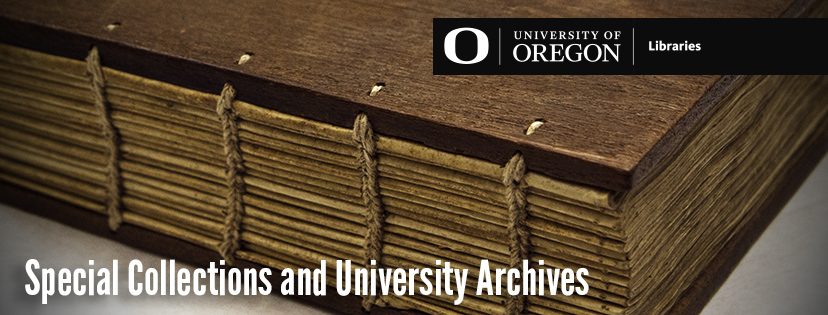Hunting for Hidden Treasure for Oregon’s Citizens
This is the fifth and final of a series of blog posts that explore exhibits during the 1960s at the Museum of Art at the University of Oregon, known today as the Jordan Schnitzer Museum of Art. Part of the Documenting UO History Project, this series will investigate two major types of exhibits: the Statewide Services Program and national exhibits that traveled to the Museum. The University Archives collection of the Museum’s records, cross referenced with the Jordan Schnitzer’s current holdings, reveal a unique institutional history of the Museum, its exhibits, and its employees. Though the Jordan Schnitzer’s current focus is on Asian art, and the Museum of Art also worked to complement its Asian collection, this project will focus on a variety of other kinds of exhibit subjects. See previous posts here.
Have you visited San Francisco’s Palace of the Legion of Honor, the San Diego Museum of Art, the Seattle Art Museum, or the Portland Art Museum? They have interacted with one another for decades out of the public eye. In the 1960s, one of the University of Oregon Museum of Art’s most ambitious projects was the exhibit “Treasure Finds in Pacific Coast Museums.” It entailed displaying a famous piece of art from each of the holdings of twelve museums along the Pacific Coast. These museums included major institutions from Seattle all the way to Los Angeles. Many of these museums remain famous today, such as the M. H. De Young Memorial Museum and the Santa Barbara Museum of Art.
This level of an exhibit was a massive undertaking in 1962, and Museum Director Wallace Baldinger began to plan for this exhibit at least a year in advance. The University of Oregon Museum of Art faced a major challenge to convince twelve museums to each loan one prominent piece of art to the institution. For example, it asked the De Young Museum to send Peter Paul Rubens’ “Madonna and Child” for the exhibit. Rubens was a famous Flemish painter who lived during the 16th century, and his pieces today are worth many thousands of dollars. In 1962, the worth of its insurance was $80,000!
Obtaining pieces and gaining permission to display them, especially ones very expensive to insure, is never an easy task. Baldinger sent many copies of the same letter to West Coast museum directors, using flowery language to request famous art that represented their museums. He wrote, “our motivation [for the exhibition] is a hunger which our faculty and students share alike, for the emotional lift which only the physical presence of truly great works of art can offer….We hope that such a show may…satisfy our hunger, at least temporarily…” 1 Based on a list of items he received, Baldinger’s argument was highly successful.
Strangely, Baldinger’s enthusiasm for the unique exhibit exposed some of his beliefs about the people of Oregon, particularly their lack of cultural awareness. In the exhibit catalogue, he wrote that the “closing” of the American frontier in the 1880s left “the westernmost reaches of the continental United States…isolated and retarded in their cultural advancement…” 2 This strong word choice is surprising, as Baldinger rarely wrote pieces that dismissed the worth of people or groups. Baldinger went on to explain that the development of museums and other forms of culture in art appeared along the coast. However, even with those institutions in place, Baldinger still thought that due to their location, the people of Oregon had little knowledge about the high forms of culture possessed by these museums. With the exhibit “Treasure Finds in Pacific Coast Museums,” Baldinger intended to bring artistic appreciation to Eugene.
Ultimately, besides this example of his viewpoint, Wallace Baldinger was a unique person who gained regional, national, and international recognition for the Museum of Art.

His tenure at the University of Oregon included years as a professor of art and museum director. In the end, he never went very far from the museum – he is buried close by, in Pioneer Cemetery. You can find him today at Plot 462-1.
Angela Rothman
Special Collections Intern
Documenting UO History Project
Information for this project was collected from the following sources:
- Wallace Baldinger to Richard S. Rheem, November 3, 1961, page 1, Box 41, Folder 93, Jordan Schnitzer Museum of Art records, UA 120, Special Collections & University Archives, University of Oregon Libraries, Eugene, Oregon.
- “Treasure Funds in Pacific Coast Museums,” April 2-25, 1962, catalogue, “Forward,” Box 41, Folder 93, Jordan Schnitzer Museum of Art records, UA 120, Special Collections & University Archives, University of Oregon Libraries, Eugene, Oregon.

